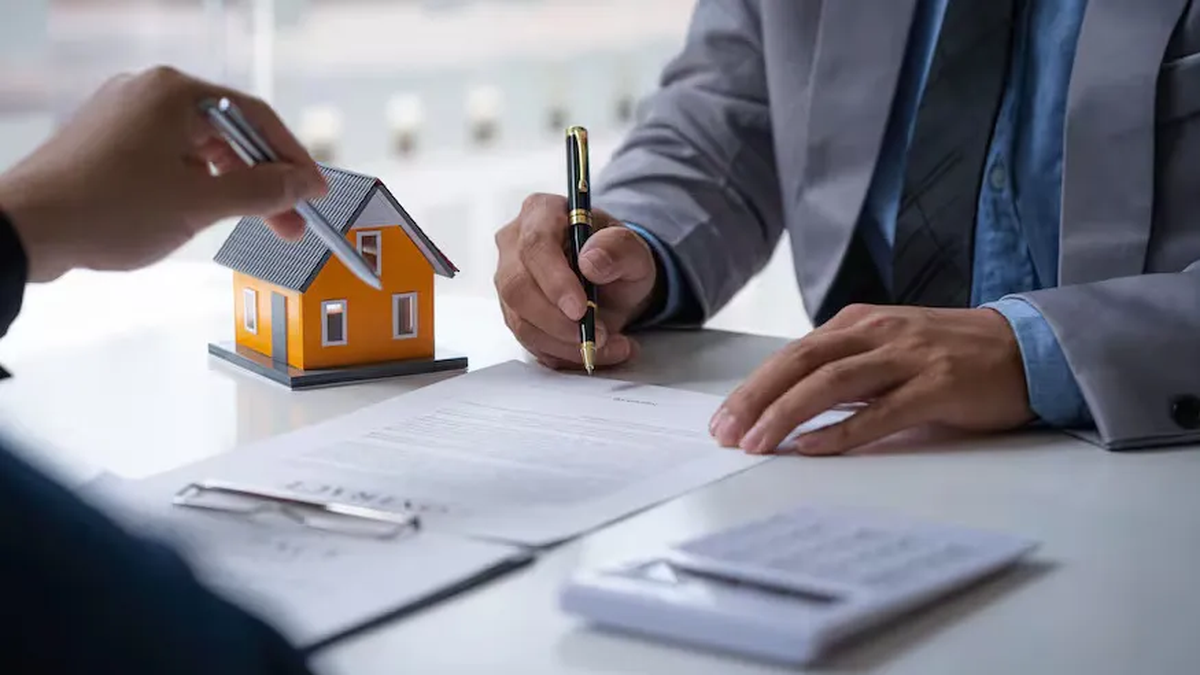BuySellBA
Administrator
Real estate sales are heating up: price increases of up to 20% are expected before the end of the year - Ambito

Source:

 www.ambito.com
www.ambito.com
May 10, 2025
With more deeds and rising prices, the real estate market shows signs of recovery. Construction is stabilizing, and the investment climate is improving. The Real Estate Chamber and Apymeco highlight a new cycle of opportunities.

Used market buying and selling operations are boosting the market and reversing the negative trend that persisted until the end of 2023.
The real estate market is experiencing a period of sustained recovery . In March 2025, property sales advanced in both the city and province of Buenos Aires, with figures that exceeded pre-pandemic levels. According to the survey by the Argentine Real Estate Chamber (CIA) , 10,317 deeds were registered in the province , making it the best March in the last seven years. The increase was 30% compared to February and 42% compared to the same month last year. In the city, meanwhile, 4,747 transactions were recorded, a year-over-year increase of 39.7%.
Meanwhile, the market is showing a recovery in prices. According to the CIA report, the average closing price per square meter in Buenos Aires City was US$2,100 in the used market, with differences depending on the type of unit: studio apartments reached US$2,223 per square meter, two-bedroom apartments reached US$2,118, and three-bedroom apartments US$2,075 (based on data from Reporte Inmobiliario).
The president of the Argentine Real Estate Chamber, Iván Ginevra , stated that the elimination of the exchange rate restrictions allowed for a realignment of market expectations and enabled a selective recovery. "It became interesting for those with dollars to invest them in real estate because every other asset in the economy is measured in pesos. When the restrictions were lifted, many assets rose in dollar terms. In contrast, real estate maintained its value," he explained.
Ginevra believes prices have already begun to move. "We're tracking closing prices (these are the final prices agreed upon between buyer and seller upon completion of the transaction, and are typically lower than the listed prices), and my thermometer shows an increase of at least 10% over the listed prices. We project a 20% increase before the end of the year," he emphasized. According to the executive, this increase is explained by increased demand for smaller units, investor pressure, and the correction in sales prices that had been delayed since 2020.
Furthermore, the growth in mortgage lending transactions reinforces this trend. In March, 992 mortgage deeds were formalized in Buenos Aires and 2,902 in the province, making the first quarter of the year the second-best in terms of mortgage volume in the last 18 years. The combination of still-affordable prices and new credit lines gave the sector a new boost.
Moderate increases were also observed in Greater Buenos Aires. Compared to February, prices increased 1.1% in CABA, 0.3% in North GBA, 0.2% in West GBA, and 0.8% in South GBA. In the year-over-year comparison, the increases were 9.9% in the city, 2.2% in North GBA, 2.3% in West GBA, and 7.6% in South GBA.

According to the entity's data, the year-over-year change in the general index was 39.41%, the lowest level since February 2022. Within the indicator, materials fell 1.27%, while labor rose 4.16% due to wage increases. This performance reflects a more predictable cost structure, which is key for investment decisions.
In dollar terms, the cost of construction also fell: an estimated 9.68% decrease compared to February, as a result of the stability of the peso and the rebound of the blue dollar. At April values, the cost per square meter stands at US$1,312 plus VAT, a value that stabilized after continuous increases during the previous year.

This upswing suggests that developers have begun evaluating new projects, especially in suburban areas with competitive land values and expected appreciation.
With a more orderly macroeconomy, currency unification, and growth expectations, the real estate sector is beginning to align itself with a more predictable scenario.
The lifting of the exchange rate controls introduced a structural change in the real estate market by enabling the free purchase and sale of dollars. This modification reduced distortions in reference values and made conditions more transparent for buyers and investors. According to Ginevra, this new scenario allows for the reactivation of postponed transactions and projects an increase in prices, especially for lower-value properties, where demand is beginning to show signs of recovery. Furthermore, the greater availability of mortgage loans represents another key driver of the rebound in activity.
The removal of restrictions could also strengthen investor confidence and create more stable conditions for the development of new projects. However, Ginevra warned that "the impact on purchasing power and market segmentation could limit the scope of the recovery."
In this context, he maintains that it will be necessary to accompany the process with concrete public policy measures that facilitate access to financing and guarantee a predictable framework for real estate investment.
www.buysellba.com

Source:

La compra venta de inmuebles se recalienta: esperan subas de hasta 20% en los precios antes de fin de año
Con más escrituras y precios en alza, el mercado inmobiliario muestra señales de recuperación. La construcción se estabiliza y mejora el clima para invertir. La Cámara Inmobiliaria y Apymeco destacan un nuevo ciclo de oportunidades
May 10, 2025
With more deeds and rising prices, the real estate market shows signs of recovery. Construction is stabilizing, and the investment climate is improving. The Real Estate Chamber and Apymeco highlight a new cycle of opportunities.

Used market buying and selling operations are boosting the market and reversing the negative trend that persisted until the end of 2023.
The real estate market is experiencing a period of sustained recovery . In March 2025, property sales advanced in both the city and province of Buenos Aires, with figures that exceeded pre-pandemic levels. According to the survey by the Argentine Real Estate Chamber (CIA) , 10,317 deeds were registered in the province , making it the best March in the last seven years. The increase was 30% compared to February and 42% compared to the same month last year. In the city, meanwhile, 4,747 transactions were recorded, a year-over-year increase of 39.7%.
Meanwhile, the market is showing a recovery in prices. According to the CIA report, the average closing price per square meter in Buenos Aires City was US$2,100 in the used market, with differences depending on the type of unit: studio apartments reached US$2,223 per square meter, two-bedroom apartments reached US$2,118, and three-bedroom apartments US$2,075 (based on data from Reporte Inmobiliario).
The president of the Argentine Real Estate Chamber, Iván Ginevra , stated that the elimination of the exchange rate restrictions allowed for a realignment of market expectations and enabled a selective recovery. "It became interesting for those with dollars to invest them in real estate because every other asset in the economy is measured in pesos. When the restrictions were lifted, many assets rose in dollar terms. In contrast, real estate maintained its value," he explained.
Ginevra believes prices have already begun to move. "We're tracking closing prices (these are the final prices agreed upon between buyer and seller upon completion of the transaction, and are typically lower than the listed prices), and my thermometer shows an increase of at least 10% over the listed prices. We project a 20% increase before the end of the year," he emphasized. According to the executive, this increase is explained by increased demand for smaller units, investor pressure, and the correction in sales prices that had been delayed since 2020.
Furthermore, the growth in mortgage lending transactions reinforces this trend. In March, 992 mortgage deeds were formalized in Buenos Aires and 2,902 in the province, making the first quarter of the year the second-best in terms of mortgage volume in the last 18 years. The combination of still-affordable prices and new credit lines gave the sector a new boost.
Moderate increases were also observed in Greater Buenos Aires. Compared to February, prices increased 1.1% in CABA, 0.3% in North GBA, 0.2% in West GBA, and 0.8% in South GBA. In the year-over-year comparison, the increases were 9.9% in the city, 2.2% in North GBA, 2.3% in West GBA, and 7.6% in South GBA.
Construction, lowest variation
The construction sector is also reflecting significant changes. Last month, the cost index compiled by the Association of Small and Medium-Sized Construction Companies of the Province of Buenos Aires (Apymeco) recorded a monthly variation of 0.73% in March, the lowest since August 2020. This slowdown translates into a real opportunity for those evaluating new projects. “The slowdown in the index allows those with savings capacity to plan investments. Construction represents a very good opportunity,” said Gustavo Serafín Marín , president of Apymeco.
According to the entity's data, the year-over-year change in the general index was 39.41%, the lowest level since February 2022. Within the indicator, materials fell 1.27%, while labor rose 4.16% due to wage increases. This performance reflects a more predictable cost structure, which is key for investment decisions.
In dollar terms, the cost of construction also fell: an estimated 9.68% decrease compared to February, as a result of the stability of the peso and the rebound of the blue dollar. At April values, the cost per square meter stands at US$1,312 plus VAT, a value that stabilized after continuous increases during the previous year.
Building orders
The improvement in conditions is also reflected in the number of construction permits processed. According to data from the Professional Council of Architecture and Urban Planning (CPAU), orders increased 7.6% in square meters compared to February and 28% compared to March 2024. In terms of the number of projects, growth was 1.5% monthly and 17% year-over-year.
This upswing suggests that developers have begun evaluating new projects, especially in suburban areas with competitive land values and expected appreciation.
With a more orderly macroeconomy, currency unification, and growth expectations, the real estate sector is beginning to align itself with a more predictable scenario.
The lifting of the exchange rate controls introduced a structural change in the real estate market by enabling the free purchase and sale of dollars. This modification reduced distortions in reference values and made conditions more transparent for buyers and investors. According to Ginevra, this new scenario allows for the reactivation of postponed transactions and projects an increase in prices, especially for lower-value properties, where demand is beginning to show signs of recovery. Furthermore, the greater availability of mortgage loans represents another key driver of the rebound in activity.
The removal of restrictions could also strengthen investor confidence and create more stable conditions for the development of new projects. However, Ginevra warned that "the impact on purchasing power and market segmentation could limit the scope of the recovery."
In this context, he maintains that it will be necessary to accompany the process with concrete public policy measures that facilitate access to financing and guarantee a predictable framework for real estate investment.
www.buysellba.com

